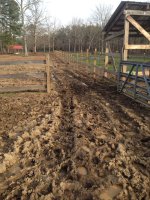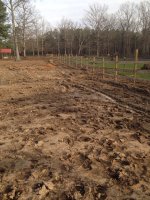That would be the Natural Resources Conservation Service (NRCS) at your local USDA office.
Steve
I've studied the BMP's recommended by the county conservation district. Basically it's about nutrient control - avoid mud in the high traffic areas, avoid rainwater from flowing into animal paddocks, add features to direct runoff and run it through calming / filtration features before it reaches the waterways. Improve surfaces in high traffic areas and pick up manure from these concentration areas.
I found this particular guide today, which looks really good:
http://www.ndspro.com/images/stories/pdfs/drainage/principles-of-exterior-drainage.pdf
As for the engineering degree mention, I'm not trying to make this difficult, but our drainage project will run several hundred feet and cross the driveway at least twice. I figure it will be several hundred feet of french drain and a few hundred feet of regular drain. It won't be a one-weekend project and I can't have the whole area cut open for too long. Right now I'm thinking I should get out the level, stakes, and string and figure out the slope all along the drainage path so that we start our trenches at the right depth.
I saw some discussion of horses and pasture areas. What I do know:
- Their feet aren't as heavy as cows, but horses run and slide around and create similar compaction and damage.
- Unless you have massive pastures and very durable soil, you can't let horses out on wet pastures. We keep ours off the pastures from late fall to mid spring. We have several sacrifice paddock areas that we use in this weather.
- Paddocks need to have an improved surface and be kept clean of manure.
- Pastures need to be mowed. I keep the tall grass cut at 5" or so and mow when it reaches 7".
During winter and rainy times we simply can't turn out the horses because the paddocks get soft and muddy and in winter the snow / water freezes causing a bunch of dangerous ice. Most of the horses are unshod so they have to stay off the ice.
David

